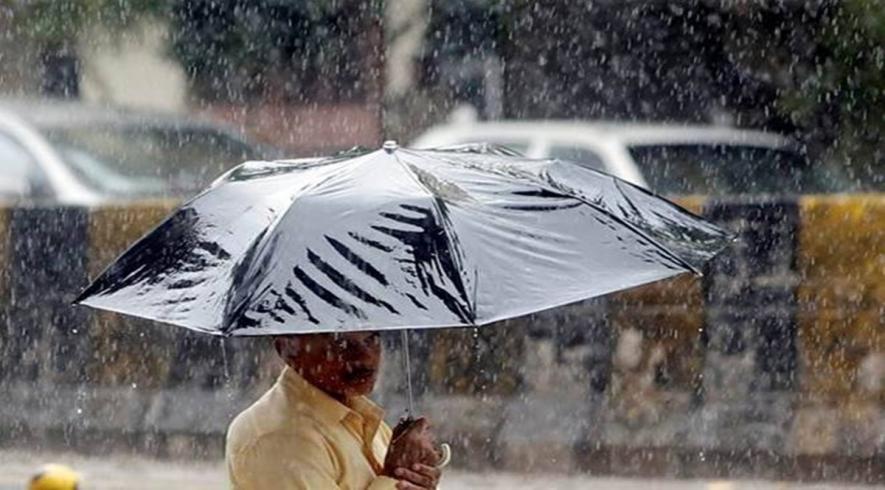Climate Change-Driven Dust Storms in West Asia to Increase Monsoon Rains in India: Study

Image Courtesy: The Financial Express
New Delhi: Climate change triggered higher frequency of dust storms in West is likely to increase rainfall in India during the monsoon season, according to a study by researchers at the Indian Institute of Technology (IIT) Bhubaneswar.
The study, published recently in the journal, Climate and Atmospheric Science, shows that dust emitted from the West Asian deserts and transported to Arabian Sea could enhance rainfall over South Asia, especially during severe drought episodes over the Indian region.
A previous study showed that desert dust aerosols emitted from the West Asian and North African deserts increase rainfall over India at short time scales of about a week or two.
This is made possible due to the warming induced by this dust over the Arabian Sea, which acts as a source of energy to speed up the winds and moisture towards the Indian region.
The researchers said this relationship is now stronger during drought years associated with El-Nino.
El Nino and La Nina are climate patterns in the Pacific Ocean that can affect weather worldwide.
The team also indicates that this dust induced rainfall enhancement is widespread across the whole South Asian monsoon domain, often occurring as a pulse that triggers short term increased rainfall in an otherwise dry situation.
"India has faced droughts or large-scale deficits and changes in the spatial pattern of monsoon rainfall due to ongoing climate change,” said V Vinoj, Assistant Professor, School of Earth Ocean and Climate Sciences, IIT Bhubaneswar.
“However, with global warming in place and changing wind patterns, we can expect a rise in dust storms across Middle Eastern deserts in the coming years. This dust may get transported to the Arabian Sea under favourable conditions and trigger short heavy rain spells over the Indian region,” Vinoj said.
The researcher team including Gopinath Nandini and Satyendra Kumar Pandey, both from IIT Bhubaneswar noted that it is well established that anthropogenic or human caused factors reduce rainfall and continue to do so for decades.
The silver lining is that there is a short period of respite to this drying trend in the form of increased short-time scales rainfall, they said.
“With the increasing potential of El-Nino like conditions in the future, this dust induced effect will become increasingly important in understanding changing characteristics of rainfall over India,” Vinoj explained.
The researchers want to draw attention to this critical observation and point to the need for tracking dust storms and their emissions to understand their effect on monsoon rainfall and even on air quality which is another growing problem for India.
“Normally, while ascertaining the air pollution levels on regional scales, we look at PM 2.5, which comprises many different species, with dust being the most dominant species over India,” Vinoj said.
“However, recent studies have shown a decline in the desert dust over India due to increased pre-monsoon rains over the North-western parts of India, potentially due to regional effect of climate change,” he added.
The researchers noted that human activities with associated emissions will continue to rise due to the country's economic development.
Increased dust over the West Asian deserts transported over the Arabian Sea increases short period rainfall over India, they said.
On the one side, dust emitted over India is declining, whereas dust over the Arabian Sea is rising leading to increased rainfall.
“It will be interesting to see how these changes combined impact air quality and rainfall,” Vinoj added.
Get the latest reports & analysis with people's perspective on Protests, movements & deep analytical videos, discussions of the current affairs in your Telegram app. Subscribe to NewsClick's Telegram channel & get Real-Time updates on stories, as they get published on our website.























